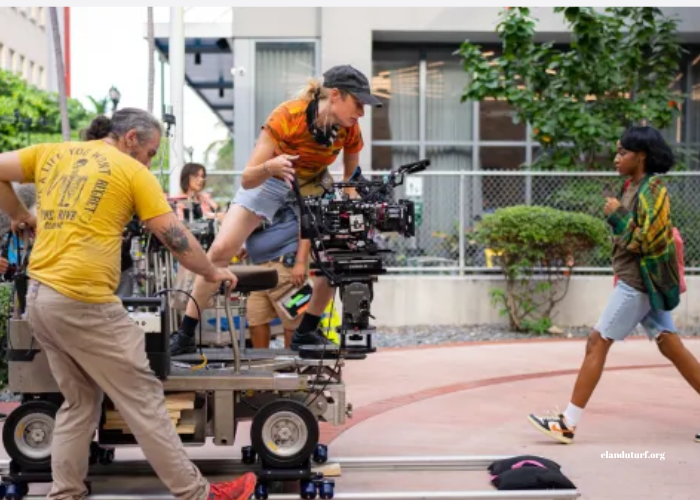The film industry is a constantly evolving entity, shaped by technological advancements, cultural shifts, and the creative vision of filmmakers. As we step into 2024, the art of movie production has undergone significant changes, integrating innovative techniques and embracing diverse narratives that resonate with a global audience. This article delves into the various aspects of movie production in 2024, exploring the intricate processes behind the camera, the impact of technology, the role of diverse voices in storytelling, and the future of filmmaking.
The Evolution of Movie Production
Historically, movie production has been a complex blend of artistic vision and technical execution. From the silent films of the early 20th century to the blockbuster epics of the present day, the industry has transformed dramatically. In 2024, we witness a more democratized and accessible filmmaking landscape, where technology enables aspiring filmmakers to tell their stories with unprecedented ease.
The Rise of Digital Filmmaking
Digital filmmaking has revolutionized the production process. High-definition cameras, drones, and mobile devices allow filmmakers to capture stunning visuals without the constraints of traditional film stock. In 2024, filmmakers utilize a variety of digital formats, such as 4K, 8K, and even 16K, to deliver visually rich experiences. This evolution has lowered production costs and made filmmaking accessible to a broader range of creators.
Moreover, digital filmmaking facilitates rapid editing and post-production processes. Software advancements, such as AI-powered editing tools, enable filmmakers to streamline workflows, allowing them to focus on creativity rather than logistics. The result is a faster turnaround time for projects, empowering filmmakers to bring their visions to life more efficiently.
Pre-Production: The Foundation of Filmmaking
Pre-production is a crucial stage in the filmmaking process, laying the groundwork for the entire project. In 2024, this phase has become increasingly collaborative, utilizing cloud-based platforms that enable teams to work together seamlessly, regardless of their physical locations. Filmmakers, writers, and production designers can share ideas, storyboards, and concepts in real time, fostering a more dynamic creative environment.
Script Development and Storyboarding
A compelling script serves as the backbone of any successful film. In 2024, writers often collaborate with script consultants and use software tools that offer real-time feedback and analytics. These tools analyze character development, pacing, and thematic elements, helping writers refine their narratives.
Once the script is finalized, filmmakers create storyboards to visualize scenes. Advanced software allows for animated storyboarding, enabling filmmakers to present their vision more effectively to investors, crew members, and studios. This visual representation aids in planning shot compositions, camera movements, and transitions, ensuring a cohesive vision.
Casting and Rehearsals
Casting remains a vital aspect of pre-production. In 2024, casting directors utilize AI algorithms to analyze actors’ previous performances, helping them identify the best fit for a role. Virtual auditions have become commonplace, allowing actors to submit self-taped auditions from anywhere in the world. This shift broadens the talent pool and provides opportunities for emerging actors to showcase their skills.
Rehearsals have also adapted to the modern landscape. Filmmakers often conduct virtual rehearsals, utilizing video conferencing platforms to facilitate interactions among cast members. This approach not only saves time but also allows for real-time feedback from directors, enhancing the overall performance before filming begins.
Production: Bringing the Vision to Life
Once pre-production is complete, the production phase begins. This stage is where the collaborative effort of the entire crew comes to fruition, as the film is shot according to the carefully crafted plan.
Set Design and Location Scouting
In 2024, set design has embraced sustainability, with many filmmakers opting for eco-friendly materials and practices. Production designers focus on creating immersive environments that enhance storytelling while minimizing environmental impact. Additionally, the trend of utilizing virtual production technology, such as LED walls, allows filmmakers to create realistic backgrounds in real time, reducing the need for extensive location shooting.
Location scouting has also evolved, with filmmakers leveraging drones and 360-degree cameras to explore potential filming sites. This technology allows for virtual walkthroughs, enabling filmmakers to visualize locations without physically being present. The combination of these advancements streamlines the decision-making process, ensuring that the chosen locations align with the film’s vision.
The Role of Technology in Production
In 2024, technology plays a pivotal role in the production phase. Camera systems equipped with advanced sensors and AI capabilities offer filmmakers unparalleled control over their shots. For instance, intelligent focus systems can track moving subjects, ensuring sharp images even during complex action sequences.
Moreover, virtual reality (VR) and augmented reality (AR) are becoming integral tools for filmmakers. VR enables filmmakers to create immersive experiences, allowing audiences to step inside the story. AR, on the other hand, enhances the production process by overlaying digital elements onto the physical world, facilitating real-time collaboration among teams.
Post-Production: Crafting the Final Product
Post-production is where the magic truly happens, as the raw footage is transformed into a polished film. In 2024, this phase has been streamlined by technological advancements, allowing filmmakers to work more efficiently and creatively.
Editing and Visual Effects
Editing software has advanced significantly, providing Movie Production with intuitive interfaces and powerful tools to shape their narratives. AI-assisted editing features can analyze footage and suggest cuts, enabling editors to focus on the creative aspects of their work.
Visual effects (VFX) have also reached new heights in 2024. Filmmakers now utilize real-time VFX engines, allowing them to visualize effects during the editing process rather than waiting for final renders. This shift not only enhances creativity but also provides directors with greater control over the final look of their films.
Sound Design and Music Scoring
Sound design and music scoring are essential components of Movie Production. In 2024, filmmakers can access a vast library of sound effects and music tracks through online platforms. This accessibility allows for experimentation and the incorporation of diverse sounds that enhance storytelling.
Collaboration with composers has also evolved, with many musicians working remotely. Cloud-based platforms facilitate seamless communication, enabling composers to create original scores that align with the director’s vision. This collaborative approach has resulted in a broader range of musical styles being integrated into films, reflecting the diversity of modern audiences.
The Role of Diversity in Storytelling
As the film industry continues to evolve, there is an increasing emphasis on diversity and representation in storytelling. In 2024, filmmakers recognize the importance of inclusive narratives that reflect the rich tapestry of human experiences.
Diverse Voices Behind the Camera
Diversity is not limited to on-screen representation; it extends to the individuals behind the camera as well. In 2024, more filmmakers from marginalized communities are gaining recognition and access to funding. This shift has led to a surge of unique narratives that challenge traditional storytelling conventions and explore untold stories.
Film festivals and organizations are actively promoting diversity initiatives, providing platforms for underrepresented voices. Programs aimed at supporting women, LGBTQ+ filmmakers, and filmmakers of color have become crucial in fostering an inclusive industry.
Audience Engagement and Cultural Impact
In 2024, audiences are more discerning and vocal about the content they consume. Social media platforms enable viewers to engage directly with filmmakers, providing feedback and promoting dialogue around representation and inclusivity. Filmmakers are increasingly aware of their audience’s expectations and are crafting stories that resonate with diverse communities.
The cultural impact of diverse storytelling cannot be understated. Films that center on underrepresented voices not only entertain but also educate and inspire. They challenge stereotypes, foster empathy, and create a more nuanced understanding of the world, contributing to a richer cultural landscape.
The Future of Filmmaking
As we look ahead to the future of filmmaking beyond 2024, several trends and innovations are poised to shape the industry.
Virtual and Augmented Reality
The integration of virtual and augmented reality in storytelling is likely to become more prevalent. Filmmakers will explore new ways to engage audiences by creating immersive experiences that go beyond traditional viewing methods. VR films that allow viewers to interact with characters and environments could become a mainstream form of entertainment.
AI and Machine Learning
Artificial intelligence and machine learning will continue to impact various aspects of filmmaking, from script analysis to audience engagement. Filmmakers may rely on AI algorithms to predict audience preferences and tailor content accordingly, ensuring that stories resonate with viewers on a deeper level.
Sustainable Practices
Sustainability will remain a focal point in filmmaking. As environmental awareness grows, filmmakers will prioritize eco-friendly practices in production and distribution. This shift could lead to the development of new technologies that minimize the carbon footprint of filmmaking while maintaining high production values.
Conclusion
The art of movie production in 2024 is a dynamic and multifaceted landscape, shaped by technological advancements, diverse voices, and a commitment to storytelling. From the pre-production phase to the final cut, filmmakers are embracing innovation and collaboration to create compelling narratives that resonate with audiences around the world. As the industry continues to evolve, one thing remains clear: the magic of cinema lies in its ability to connect, inspire, and entertain, transcending boundaries and reflecting the rich tapestry of human experience.




